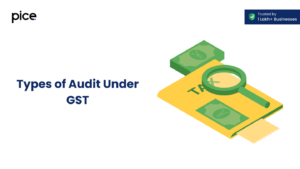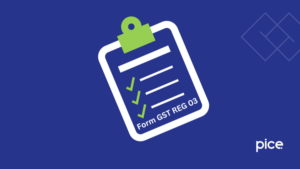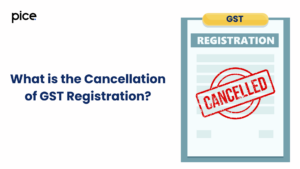Know Advertisement GST Rate and Compliance Details
- 12 Aug 24
- 18 mins
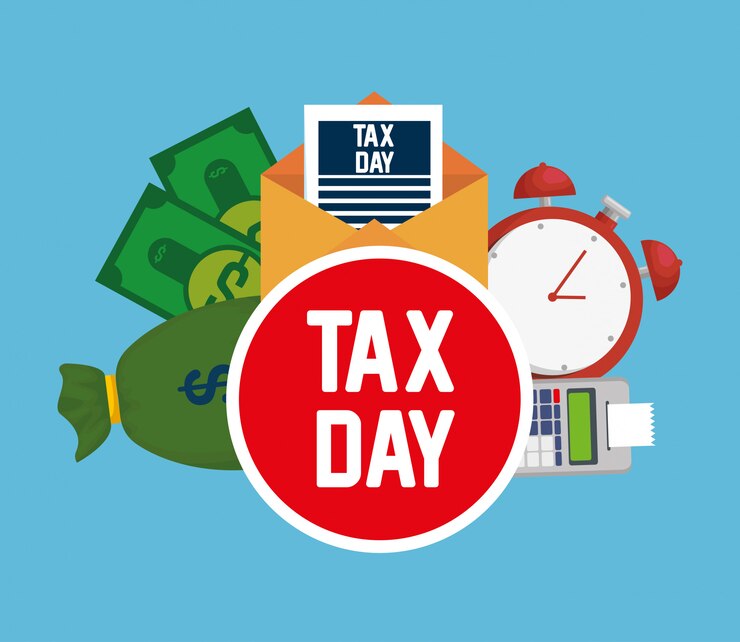
Know Advertisement GST Rate and Compliance Details
- Online Advertising is defined under the CGST Act, 2017 And IGST Act, 2017
- Taxability of Advertising Sector pre-GST
- Complexity and Compliance Challenges
- Advertising Sector under GST and Rates of Taxes
- Advertisement Through Advertisement Agencies
- Advertisement Through Registered Person Outside India
- SAC Codes of Advertising Services
- Conclusion
Key Takeaways
- GST on Advertising Services: The GST rate for advertising services is set at 18% across all media.
- Input Tax Credit: Businesses can claim ITC on GST paid for advertising services if used for business purposes.
- Online Advertising Taxation: Online advertising services are taxable under GST to align with digital economy taxation.
- International Advertising Services: Services from outside India are subject to IGST, payable by the Indian recipient under RCM.
- SAC Codes: Specific SAC codes categorize advertising services for standardized GST applications.
The Goods and Services Tax (GST) in India, which was implemented on July 1, 2017, has changed the way taxes are paid, including in industries related to advertising. The comprehensive approach towards taxation under the Central GST (CGST) Act, 2017 and the Integrated GST (IGST) Act, 2017 aims to subsume a majority of the indirect taxes into a single tax system, facilitating a uniform tax rate across the country and improving efficiency
This overview discusses the GST's influence on the advertising business, including definitions, taxability, rates, and other important topics.
Online Advertising is defined under the CGST Act, 2017 And IGST Act, 2017
Under the CGST (Central Goods and Services Tax) Act, 2017 and the IGST (Integrated Goods and Services Tax) Act, 2017, in India, internet advertising space is defined as a taxable supply of services. These acts are part of India's GST legislation, which combines several former indirect taxes into a single tax framework.
The CGST Act covers the supply of goods and services within a single state, while the IGST Act deals with the supply of goods and services across state boundaries.
Online advertising specifically refers to the services provided through digital platforms to promote a business, product, or service. This encompasses a wide range of activities, including but not limited to:
- Display advertisements on websites or mobile applications
- Search engine marketing (SEM) and search engine optimization (SEO)
- Social media advertising and marketing
- Email marketing
- Affiliate marketing
- Content marketing through blogs, articles, and videos
- Mobile advertising, including SMS and app-based advertisements
These services are recognized under specific Harmonized System Nomenclature (HSN) codes and Services Accounting Codes (SAC) for the purpose of taxation under GST. The tax system that comes under CGST and IGST appreciates digital marketing, which marketers use for their advertisements, and keeps the tax level at the optimum level for the sector, indicating that digital marketing is their priority.
Taxability of Advertising Sector pre-GST
The taxation system under both CGST and IGST acknowledges the importance of digital promotion and provides provisions for its taxes, reflecting the changing nature of advertising businesses' approach to digital media.
The taxability of advertising services varied significantly, depending on the type of media used for promotion and the geographical location of the service provider and the recipient. Here's an overview of how the sector was taxed prior to GST:
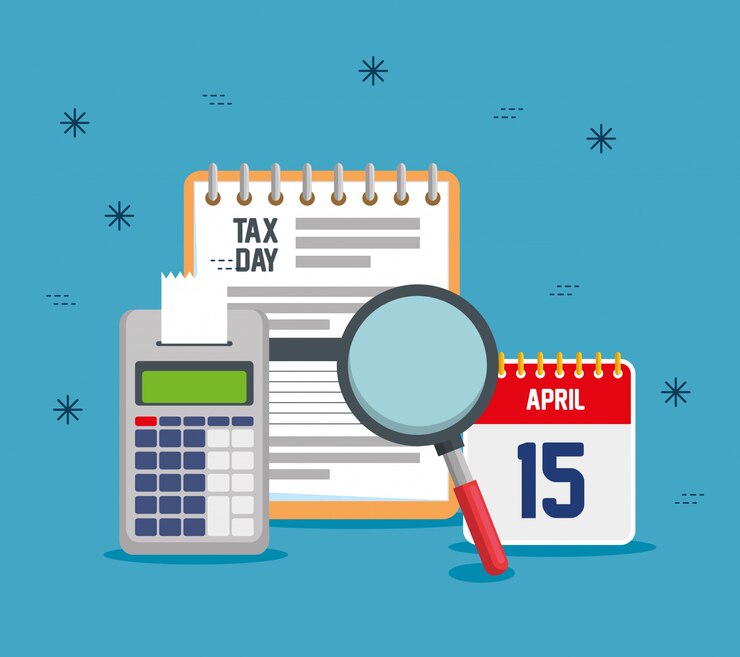
- Service Tax
The central government levied a Service Tax on promotion services. This tax was applicable to most services provided by the advertising sector, including television, radio, print media and online.
The rate of service tax towards the end of the pre-GST era was 15%, inclusive of Swachh Bharat Cess and Krishi Kalyan Cess.
- Value Added Tax (VAT)
In addition to the service tax, certain types of advertising also attracted value-added tax (VAT), which was a state-level tax. For example, the sale of advertising space in print media (newspapers and magazines) was subject to VAT at varying rates across different states.
VAT rates and rules differed from state to state, leading to significant compliance challenges for businesses operating in multiple states.
- Other Taxes
Depending on the specific nature of the advertising service and the medium used, other indirect taxes such as Central Sales Tax (CST) and various cesses could also apply.
For instance, the production of advertisements (like making banners or signboards) could attract these taxes, adding to the overall tax burden on the advertising sector.
Complexity and Compliance Challenges

The complexity and compliance challenges faced by the advertising sector prior to the introduction of the Goods and Services Tax (GST) in India were significant due to the multiplicity of taxes and the variance in regulations across different states.
This complex tax structure imposed several challenges on businesses operating within the advertising industry:
- Multiple Tax Regimes
Before GST, the advertising sector was subjected to a variety of taxes, including service tax at the central level and value-added tax (VAT) at the state level, along with the possible applicability of central sales tax (CST) and other cesses for specific services or products.
Each of these taxes had its own compliance requirements, rates, and rules, making the tax structure highly intricate.
- Dual Taxation
One of the major challenges was the dual taxation of certain advertising services. For instance, while service tax was levied on the service aspect of promotion, VAT could be applied to the goods aspect of the same transaction (such as printing).
This not only increased the tax burden on companies but also complicated the calculation and payment of taxes.
- State-wise Variance in VAT
VAT, being a state subject, varied significantly across different states in terms of rates, exemptions, and procedural requirements. Businesses operating in multiple states had to navigate through a maze of state-specific VAT laws in addition to complying with central taxes like Service Tax.
This variance across states led to difficulties in maintaining consistent pricing and billing practices.
- Compliance and Administrative Burden
The need to comply with multiple tax laws meant that businesses had to invest a considerable amount of time and resources into tax administration. This included maintaining separate records for each type of tax, filing multiple returns, and dealing with different tax authorities.
The administrative burden was particularly heavy for small and medium-sized enterprises (SMEs) in the advertising sector.
- Increased Cost of Compliance
The complex tax structure not only increased the direct tax burden on businesses but also escalated the indirect costs associated with compliance. However, it required that the organization hire specialized tax experts, acquired tax software systems, and train staff members to deal with tax issues.
For many businesses, it was difficult to cover these costs, which basically destroyed the competitive nature of the economy.
Advertising Sector under GST and Rates of Taxes

Under GST, the complex and varied tax structure that existed before GST was streamlined into a single, unified tax system. This move aims to eliminate compliance costs, minimize tax cascading, and improve the tax system's openness and efficiency.
Here’s an overview of how the advertising sector is taxed under GST and the applicable rates:
- Unified Tax Structure
Under GST, all forms of promotional services, including print, digital, television, and radio promotion, are treated as taxable supplies of services. This uniform application of the GST rate makes sure that all promotion services, whether digital or print—it does not matter—receive the same rates.
To make the tax system transparent and friendly for businesses, it simplifies the taxation system and reduces the costs associated with business tax filings.
- Rate of Taxes
The GST Council, which is the governing body responsible for making recommendations to the Union and State Governments on issues related to GST, has set the tax rate for advertising services at 18%. This rate is for ads of all kinds of promotional services that will be levied proportionately to everybody and everywhere so as to make the taxation policy in this sector uniformly and consistently administered.
This rate consolidates the earlier multiple taxes, such as service tax, VAT, and other state-specific levies, into a single tax, thereby simplifying the tax calculations and payment process for businesses involved in promotion.
- Impact on Pricing and Compliance
The implementation of a uniform tax rate has implications for the pricing of promotional services. While some services may see an increase in effective tax rate, leading to higher costs, the simplification of the tax system and the availability of input tax credit (ITC) can offset these costs to some extent.
Businesses can claim ITC on GST paid on inputs and input services, which can be used to reduce the GST liability on the output service, including promotional services. This mechanism helps in reducing the cost of advertising services indirectly.
- Simplification of Compliance
GST has significantly simplified the compliance process for the advertising sector. Under the previous regime, businesses had to deal with multiple taxes and comply with various state and central regulations.
GST has consolidated these into a single framework, requiring businesses to file periodic returns and make tax payments through the GST portal. This simplification reduces the administrative burden and compliance costs for businesses in the advertising sector.
Advertisement Through Advertisement Agencies
Advertisement agencies typically offer a range of services, including creative design, media buying, planning, and strategy development for various promotional campaigns. Here's an overview of how advertising through advertisement agencies is handled under GST:
- GST Applicability
Services provided by advertisement agencies are considered supply of services under the GST law. As such, these services attract GST, which the agencies are required to collect from their clients and remit to the government. This system ensures a uniform tax structure across the country, simplifying the previously complex tax regime that varied from state to state.
- Rate of Taxes
The GST rate for advertising services, including those provided through advertisement agencies, is generally set at 18%. This rate applies across all forms of media and platforms, whether the promotion is conducted through traditional media (like television, radio, and print) or digital platforms (such as online, social media, and email marketing).
- Place of Supply
For GST purposes, the place of supply rules determine whether a transaction is subject to CGST, SGST (state GST), or IGST (integrated GST). For services provided by advertisement agencies:
If both the supplier (advertisement agency) and the recipient (client) are located in the same state, CGST and SGST are applicable.
If the supplier and recipient are in different states, IGST is levied.
These rules ensure that the GST collected is credited to the appropriate state, aligning with the consumption-based tax model of GST.
- Input Tax Credit (ITC)
One of the significant advantages under the GST system for businesses, including those availing services from advertisement agencies, is the availability of Input Tax Credit (ITC). Clients of advertisement agencies can claim ITC on the GST paid on these services, provided they are used in the course or furtherance of their business.
This mechanism helps in reducing the overall cost of promotion by allowing businesses to offset their GST liabilities with the tax paid on inputs.
- Compliance Requirements
Advertisement agencies, like other service providers under GST, are required to comply with various provisions, including registration, invoice generation, tax payments, and filing of returns.
Agencies with a turnover exceeding the threshold limit are mandated to register under GST. They must issue GST-compliant invoices detailing the GST charged on their services and file regular returns summarizing their sales and purchases.
Advertisement Through Registered Person Outside India
When it comes to the supply of advertisement services through a registered person outside India to a recipient within India, the GST framework outlines specific provisions to address the tax implications of such international transactions.

These provisions are designed to ensure that the tax regime captures the value of services consumed within India, regardless of where the service provider is located. Here is how GST treats advertisements for services provided by a registered person outside of India:
- Place of Supply
The determination of the place of supply is crucial in understanding the tax implications for services supplied by persons outside India. For advertisement services, the place of supply is generally considered to be the location of the recipient of the service.
This means if the recipient is located in India, the services are deemed to be supplied in India and therefore are subject to GST.
- IGST on Import of Services
The Integrated Goods and Services Tax (IGST) is applicable on the import of services, including advertisement services, from a person outside India to a recipient within India.
The IGST combines both the Central GST (CGST) and the State GST (SGST) to simplify tax on inter-state transactions, including services imported into India. This guarantees that the central government collects the tax money but distributes it to the states in accordance with the place of consumption.
- Reverse Charge Mechanism (RCM)
Under the GST regime, the Reverse Charge Mechanism (RCM) comes into play for services imported from outside India. This mechanism shifts the responsibility of paying the GST from the foreign service provider to the recipient of the service in India.
In the context of advertisement services, this means that if an Indian company avails promotional services from a provider located outside India, the Indian company would be liable to pay the GST under RCM.
- Input Tax Credit
One of the benefits of the GST system is the availability of Input Tax Credit (ITC) for the tax paid on inputs used for business purposes. In the case of advertisement services received from outside India, the recipient (an Indian business) can claim ITC on the IGST paid under RCM, provided these services are used for business purposes and are eligible for ITC as per GST laws.
This can help offset the GST liability on the output services or goods supplied by the recipient.
- Registration and Compliance
Indian recipients of advertisement services from outside India are required to register under GST if they are liable to pay tax under RCM, even if they do not exceed the turnover threshold for mandatory registration.
They must comply with all the requisite provisions, including tax payment, filing of returns, and maintaining records of such transactions.
Input Tax GST Credit on Advertising Services
The concept of Input Tax Credit (ITC) under the Goods and Services Tax (GST) regime is a significant provision that allows businesses to reduce their tax liability by claiming credit for the tax paid on inputs used in the production of goods or provision of services.
When it comes to promotional services, businesses can also avail themselves of the benefits of ITC, subject to certain conditions and restrictions as laid out under the GST laws. Here’s how the Input Tax Credit mechanism works for promotional services:
Eligibility for ITC on Advertising Services
Businesses that use promotional services as a part of their operational, promotional, or marketing activities can claim ITC on the GST paid on these services. This is predicated on the requirement that the promotional services are used for the purpose of the business and are intended to drive sales, brand promotion, or business expansion.
Conditions for Claiming ITC
To claim ITC on promotional services, businesses must ensure that:
- GST Invoices: They possess a valid tax invoice or debit note issued by the supplier of promotional services, which clearly mentions the GST amount charged.
- Payment: The GST charged on such services has been actually paid to the government by the supplier.
- Business Use: The services are used for the purpose of business, and there is a direct nexus between the promotional service availed and the business activities.
- Compliance with GST Returns: The recipient has furnished the GST return, and the details of the invoice are reflected in their returns, allowing for the matching and verification process under GST.
Restrictions on ITC Claim
There are certain restrictions on claiming ITC under the GST framework:
Personal Use: If the promotional services are used for personal purposes or for exempt supplies, the ITC on such services cannot be claimed.
Blocked Credits: Certain expenditures are listed under the GST law as blocked credits, where ITC is not available. However, generally, promotional services are not included in the list of blocked credits, allowing businesses to claim ITC.
Documentation and Compliance
To claim ITC on advertising services, businesses need to maintain proper documentation, including invoices, contracts, and payment proofs. Additionally, they need to ensure that their GST returns are accurately filed, reflecting the details of the promotional services availed and the corresponding ITC claimed.
Impact of ITC on Business Costs
The ability to claim ITC on advertising services can significantly reduce the cost of promotion for businesses. By offsetting the GST paid on advertising services against the GST liability on the sale of goods or services, businesses can effectively lower their overall tax burden, improving cash flow and potentially reducing the cost of goods or services to the end consumer.
SAC Codes of Advertising Services
The Services Accounting Codes (SAC) under the GST regime in India are designed to standardize the classification of services for tax purposes. These codes help in identifying the services being provided and applying the correct tax rates. For promotion services, specific SAC codes are used to classify various types of activities.
Here’s a breakdown of some of the key SAC codes related to advertising services:

- 998361: Advertising Services
This code is used for general advertising services, covering a broad range of advertising activities. They plan, produce campaigns, and coordinate them across various platforms, including print, broadcast, and online mediums. In this category, there is a list of services, and some of those may include ad creation and the management of comprehensive campaigns.
- 998362: Sale of Advertising Space or Time, Except on Commission
This SAC code applies to the sale of advertising space or time on various platforms, such as newspapers, magazines, billboards, digital platforms, radio, and television, directly by the owners of these platforms. It does not include services provided by agencies that sell advertising space or time on a commission basis.
- 998363: Sale of Advertising Space or Time on Commission
Unlike 998362, this code is specifically for services related to the sale space for advertisement or time where the service provider acts on a commission basis. This includes advertising agencies or brokers who facilitate the sale of space or time for advertising on behalf of media companies or platforms, earning a commission for their services.
- 998364: Online Advertising
This SAC code is dedicated to online advertising services, reflecting the growing importance of digital platforms in the advertising sector. It covers advertising services provided through the internet, including search engine marketing (SEM), social media advertising, email marketing, banner ads, and other forms of digital advertising.
- 998365: Other Advertising Services
This category is a catch-all for advertising services that do not fit into the specific codes listed above. It can include specialized advertising services, innovative advertising methods, and other non-standard promotional activities that are not classified elsewhere.
Conclusion
The implementation of GST has brought significant changes to the taxability and compliance requirements of the advertising sector in India. By streamlining the tax rates and simplifying the tax regime, GST has made it easier for businesses to manage their advertising expenses.
The ability to claim ITC on advertising services further incentivizes companies to invest in promotion, contributing to the growth of the sector. The recognition and taxation of online services under GST highlight the adaptability of the tax system to modern business practices and digital transformations.
💡Get started with PICE today and streamline your GST payments and export invoicing process. Click here to sign up and take the first step towards hassle-free GST management.
 By
By 








